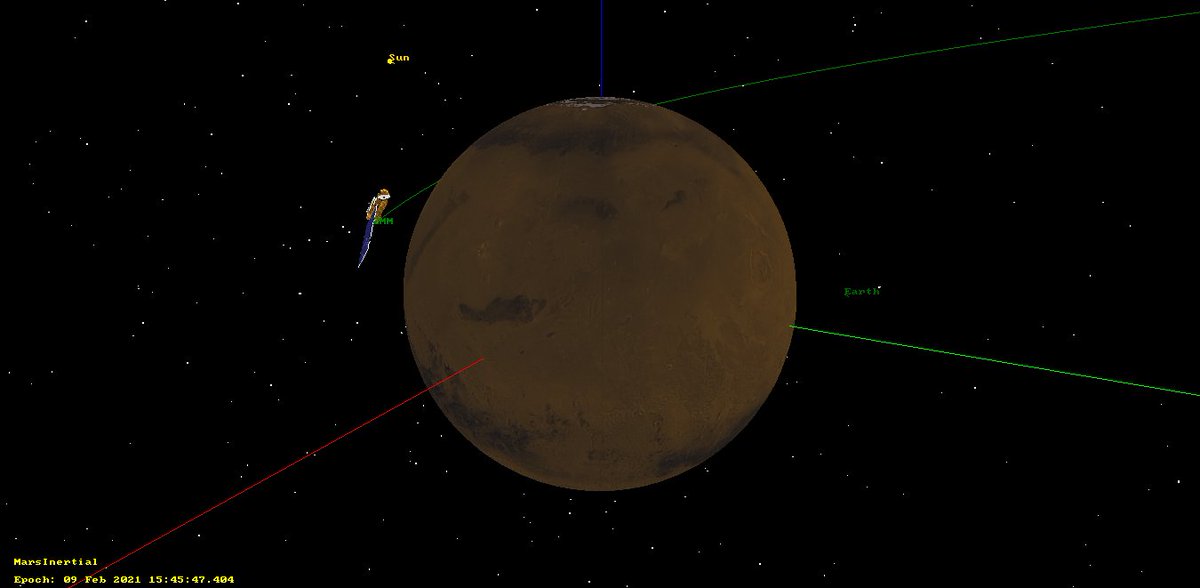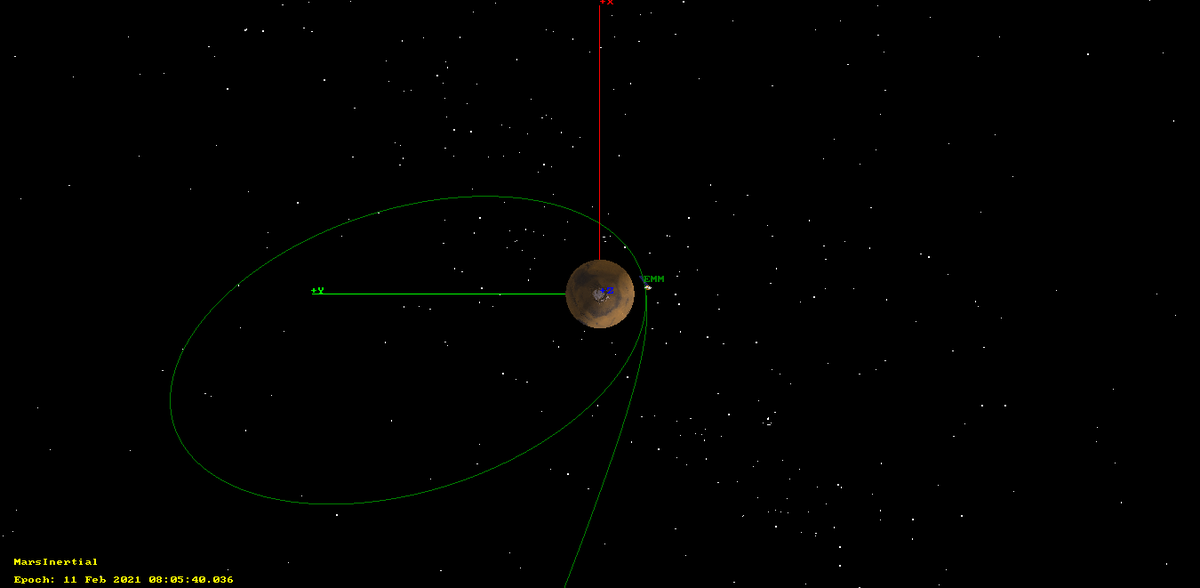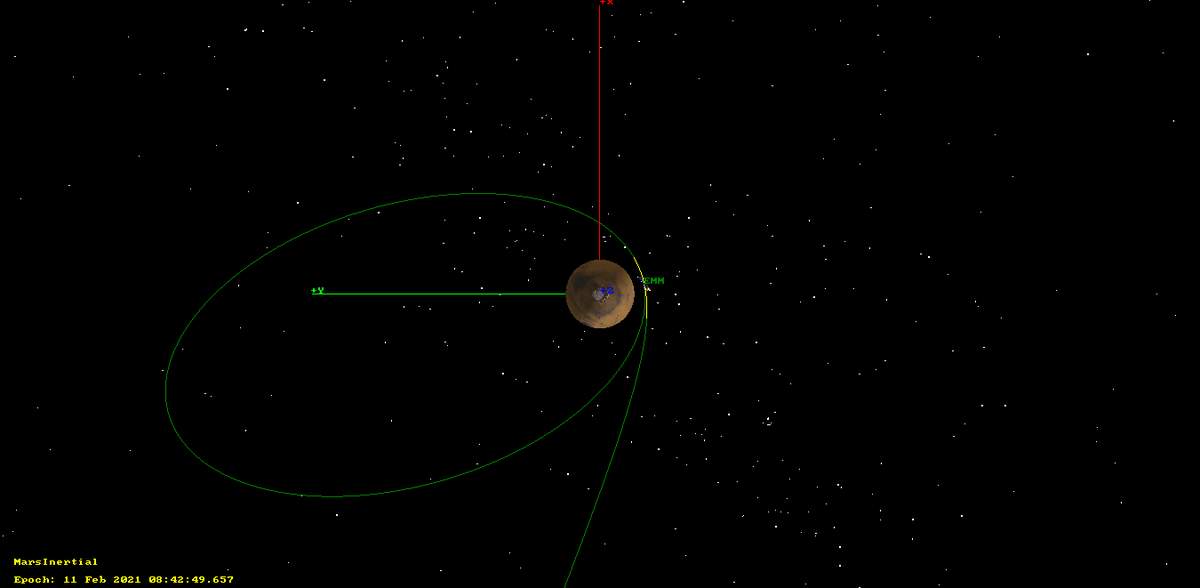Today at 15:45 UTC @HopeMarsMission will be performing its Mars orbit insertion burn. Here are some technical details about this manoeuvre. Thread...
The spacecraft would arrive to periapsis with a velocity of 5.1 km/s, a C3 of 7.23 km^2/s^2, and an altitude of 1162 km. The inclination of the hyperbolic orbit is 20 degrees. Some media state a target capture orbit of 1000 km x 49380 km (altitude).
This orbit has a semi-major axis of 28580 km, and a C3 of -1.5 km^2/s^2. The required C3 delta of 8.7 km^2/s^2 can be supplied by an (impulse) delta v of 943 m/s. This is what such a capture orbit would look like seen from over Mars north pole.
Now, EMM's thrusters are not very powerful. It has 6x 120N Hydrazine thrusters. EMM has a dry mass of 550 kg and total fuel of 800 kg, of which we might guess that 100 or 200 kg have been spent in correction manoeuvres already.
The media states that the MOI will spend half of the fuel, so that's 400 kg. The delta v for a burn of duration T, depending on the initial mass m0, thruster force F and specific impulse Isp is shown below (here g0 is Earth's surface gravity).
A reasonable guess for the thruster's Isp is 300 s, and we have F = 720 N. For an initial fuel mass of 700 kg, this equation gives a burn duration of 23.3 minutes. The media state a burn duration of 27 minutes, which makes sense.
With such a long burn, parts of it will happen away from periapsis, reducing the overall Oberth effect, so the burn needs to be slightly longer. The mass flow rate of the thrusters is F/(Isp*g0) = 0.24 kg/s, so a 27 minute burn will spend 396 kg of fuel.
Going over to GMAT, it seems that a 1418 second burn (23.63 minutes) works well. The yellow segment shows the burn duration. The longer duration of 27 minutes perhaps allows for ullage, or maybe the thrust is slightly less than 720 N.
The spacecraft will go behind Mars between 16:08:58 and 16:14:53. This means that we will see the full manoeuvre. All events will be seen at Earth 641 seconds later.
Amateur DSN trackers in Europe and Asia can track the X-band signal at 8402.655 MHz LHCP. The Doppler track will confirm the burn acceleration, and the eclipse timings will serve to confirm that the achieved capture orbit fits the model.
@amsatdl's Bochum observatory will be tracking with their 20m antenna and doing a livestream. I will be tweeting live technical updates as a commentary to Bochum's and the official livestream. Be sure to follow us for this event! https://twitter.com/amsatdl/status/1359055660906913795

 Read on Twitter
Read on Twitter





